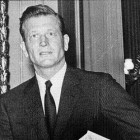Kindergarten teacher Alison Brackman of P.S. 230 in Kensington, Brooklyn, tells parents that there are two kinds of books: Meat-and-potatoes reads, which stay with you long after they’re finished, and potato-chip books – momentarily delicious, but utterly forgettable. Summer reading traditionally falls square into the potato-chip camp, but for readers still hungry for substance–especially with a focus on city schools–three recent books are worth a bite. Diane Ravitch’s The Death and Life of the Great American School System: How Testing and Choice Are Undermining Education (Basic Books, 284 pp., $26.95) itemizes New York’s premier education historian’s evolution in school-reform thinking. Long before it was fashionable, Ravitch championed data-based accountability and national curriculum standards, as part of the (first) Bush and Clinton administrations. Yet now that the reform pendulum has swung hard to the accountability pole, Ravich’s book recants her earlier positions, with meticulous explanations of why her beliefs have shifted.









